
4 Powerful Word Mapping Templates for PMs
I recently went looking for a word mapping template for a project I’m managing.
Word mapping is a type of mind mapping, a powerful tool that facilitates comprehensive planning, enhances creativity, and promotes team collaboration. If you haven’t had the pleasure of trying it out, it’s a great method to add to your next brainstorming session.
Here’s the problem: all the templates I found were either gated behind a paywall or looked like a worksheet for kids. The exercises for kids I can understand – word mapping is a brilliant way to teach children how to brainstorm, which in turn helps them with school projects and papers. But the paywalls? Well.
We’re not big fans of paywalls at Visor, so we’ve set up a few templates for you to use if you’d like to introduce the method to your team. And the best part is, like our app, it’s totally free.
How to do a Word Mapping Exercise as a PM
When you’re brainstorming, you’re usually trying to problem solve with a group of people. Maybe you aren’t sure how your app’s new dashboard view should look. Perhaps you’re trying to describe an error to clients in a way that controls for damage and explains the issue without causing undue distress. Or you could be working on a new project that’s just missing… something, but you’re not sure what.
Mind mapping, which word mapping is one form of, encourages a non-linear way of thinking, which is particularly effective for brainstorming and problem-solving. By visually representing ideas and their connections, team members can explore multiple facets of a project without the constraints of traditional, linear methods. This approach allows for the free flow of ideas, to help teams work together to creatively solve complex problems. Project managers can guide their teams to think outside the box, identify potential obstacles early, and develop strategies to overcome them.
Here’s a TEDtalk on the topic of mind maps
Word mapping is a way to get all of the terms and phrases about a given issue out of your brain and onto a page so that you can think more clearly and examine it from different perspectives. Generally when word mapping, you’re looking for themes and commonalities that you can only spot if you’re able to take a step back and view the complete picture.
It can also be very helpful if you start from a data-informed place. Look at the previous work you’ve done in related areas to see how in-depth you want to make this word map, including notes on how it will impact the final project.
Having a tool with a Dashboard (like Visor’s) is a really helpful way to pull and share this information with your team in a fast, intuitive way.
Visor’s dashboard options
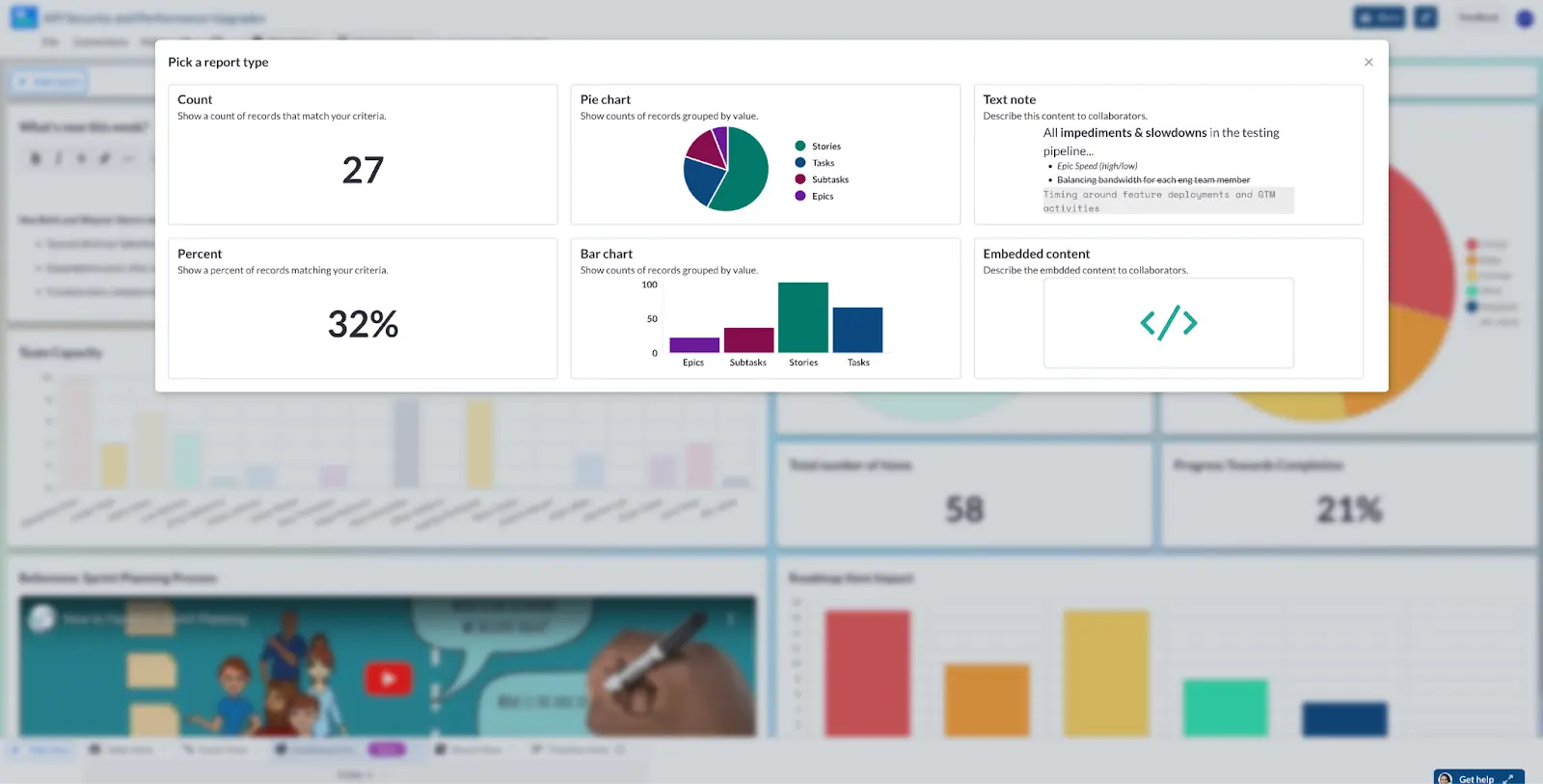
Visor’s dashboards allow you to look at the big picture or go granular, diving deep into what’s making a project work. So you can be data-informed every step of the way.
A closeup on Visor’s dashboards
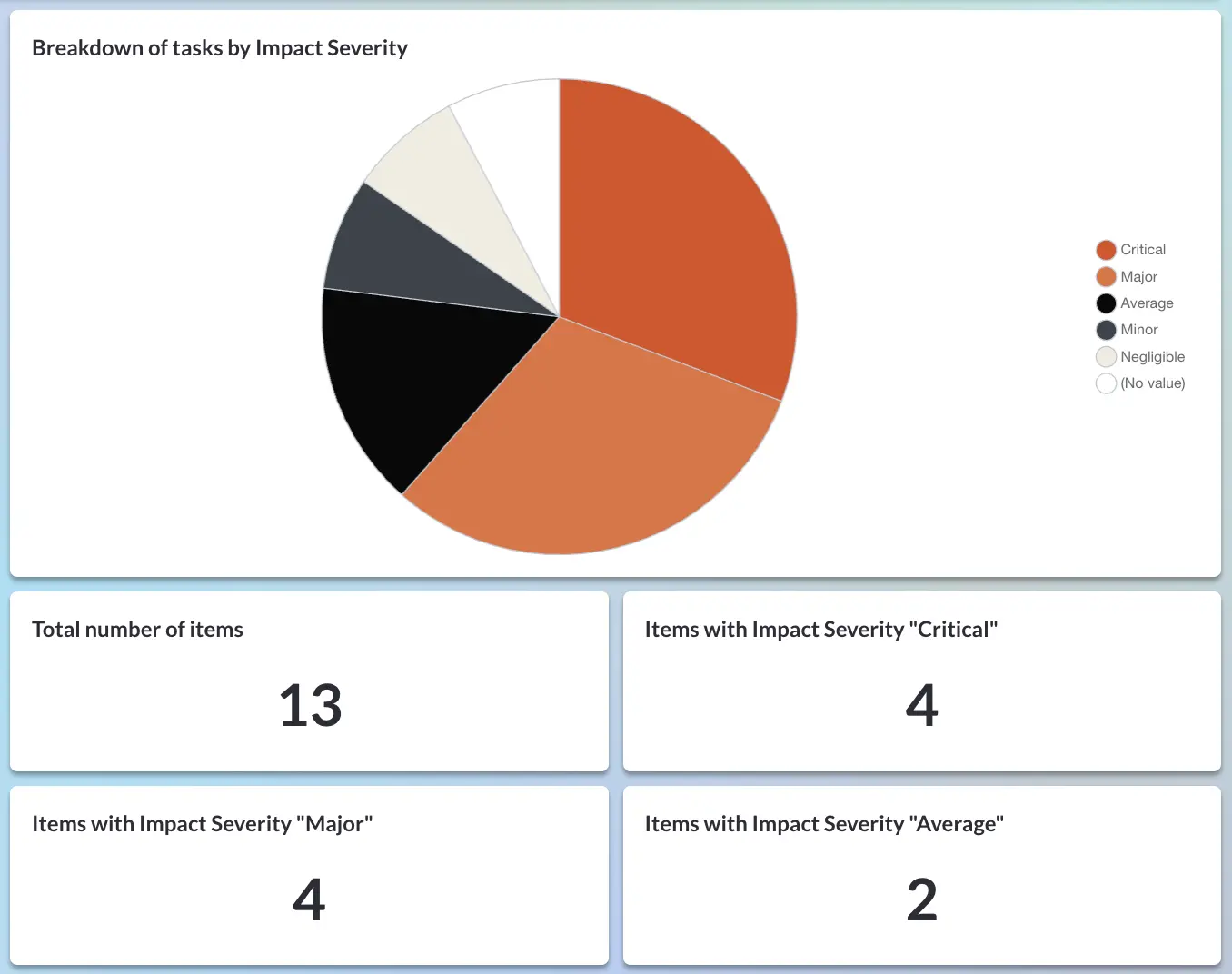
If you’d like to try doing a word map, but haven’t yet, this is the process:
- Prepare the Materials: Decide whether you’ll use physical materials (like a whiteboard, sticky notes, and markers) or a digital tool (such as Canva, or Miro). Ensure you have a comfortable and distraction-free environment for the exercise.
- Define the Central Theme: Clearly define the central theme or problem you want to address. This could be the project goal, a specific challenge, or a key deliverable. Explain the objective of the word mapping exercise to the team, emphasizing how it will help with project planning.
- Brainstorm Initial Ideas: Bring together your team members and encourage open communication. Write down the main theme in the center of the map. Ask team members to shout out related words or concepts, which will be the first level of branches.
- Expand the Map: For each branch, explore sub-ideas or related concepts. Encourage team members to think broadly and creatively.Incorporate colors, images, and symbols to differentiate between different types of ideas and to make connections clearer.
- Organize and Prioritize: Cluster related ideas together to identify themes and patterns. Determine which areas are most critical for achieving your project objectives and focus on them.
- Refine and Review: Encourage team members to review the map and suggest any additions or refinements. Ensure all connections between ideas are clear and logical.
- Develop an Action Plan: Translate the word map into actionable tasks. Assign responsibilities and deadlines for each task. Ensure that the final word map is documented and shared with all team members for reference.
- Follow Up: Revisit the word map periodically to update it with new information and track progress. Use feedback from the exercise to improve future word mapping sessions.
Word Map Templates for PMs
If you’d like to use Canva natively for this exercise, or if you’d like to present on the results of the exercise to stakeholders, you’ll need it to look professional.
Here are a few templates you can edit to show connections and reflect your business’s own style guide.
Sleek and simple
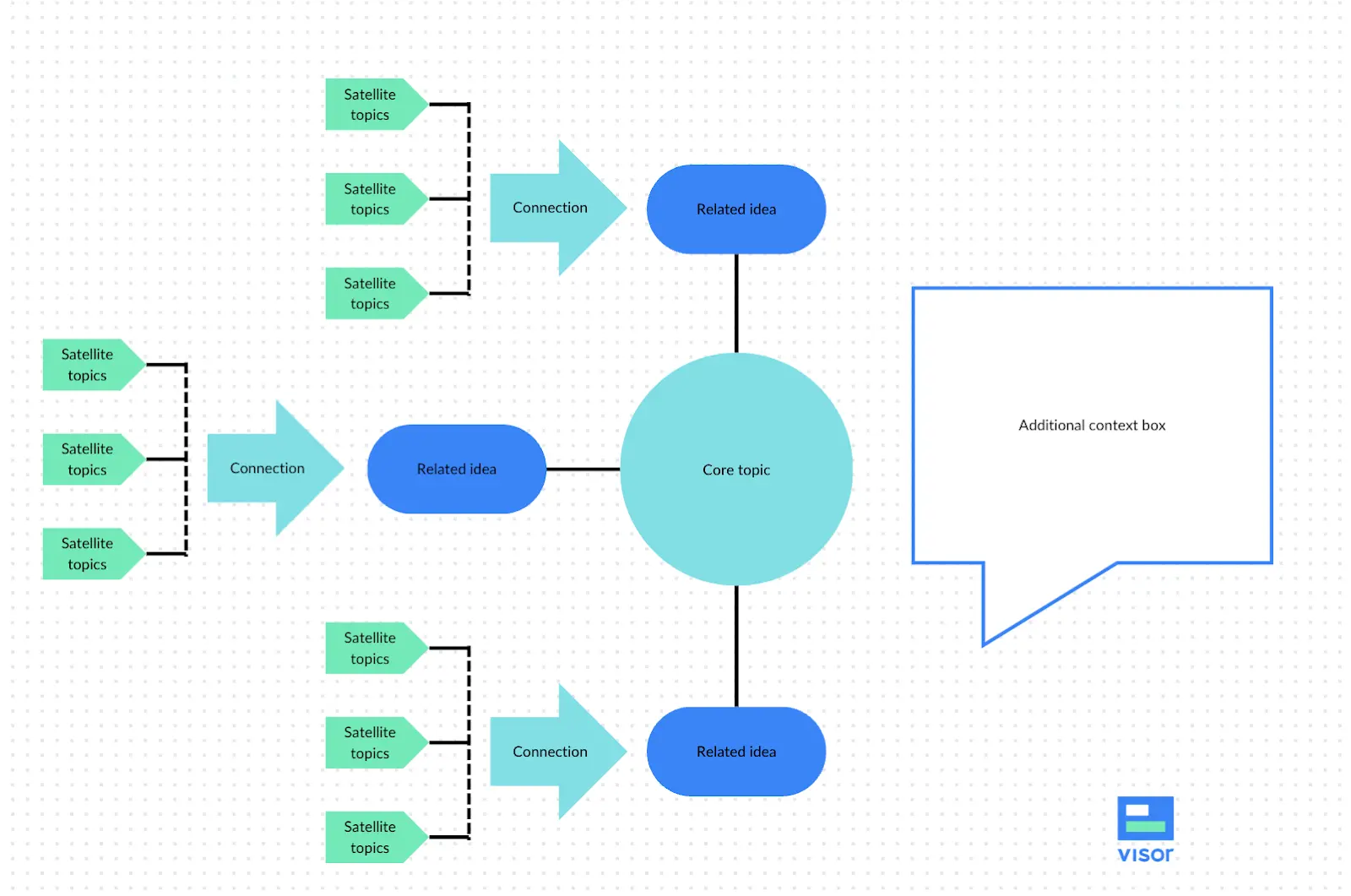
This is a great template if you need the information to be as straightforward as possible, without frills.
Professionally creative
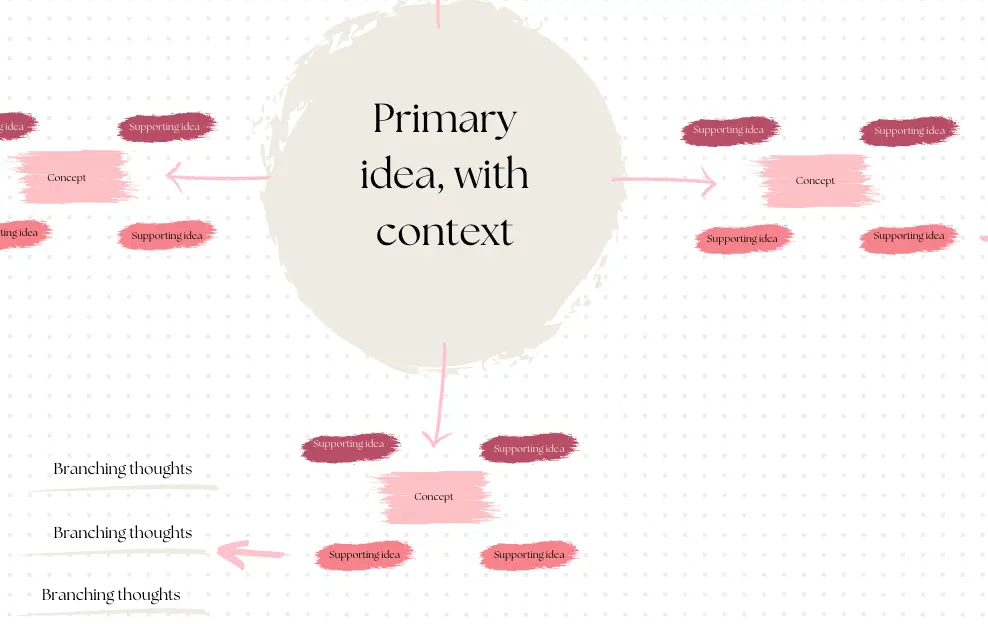
Working on a more creative or design-related project? Let your word map reflect it!
Detailed and technical
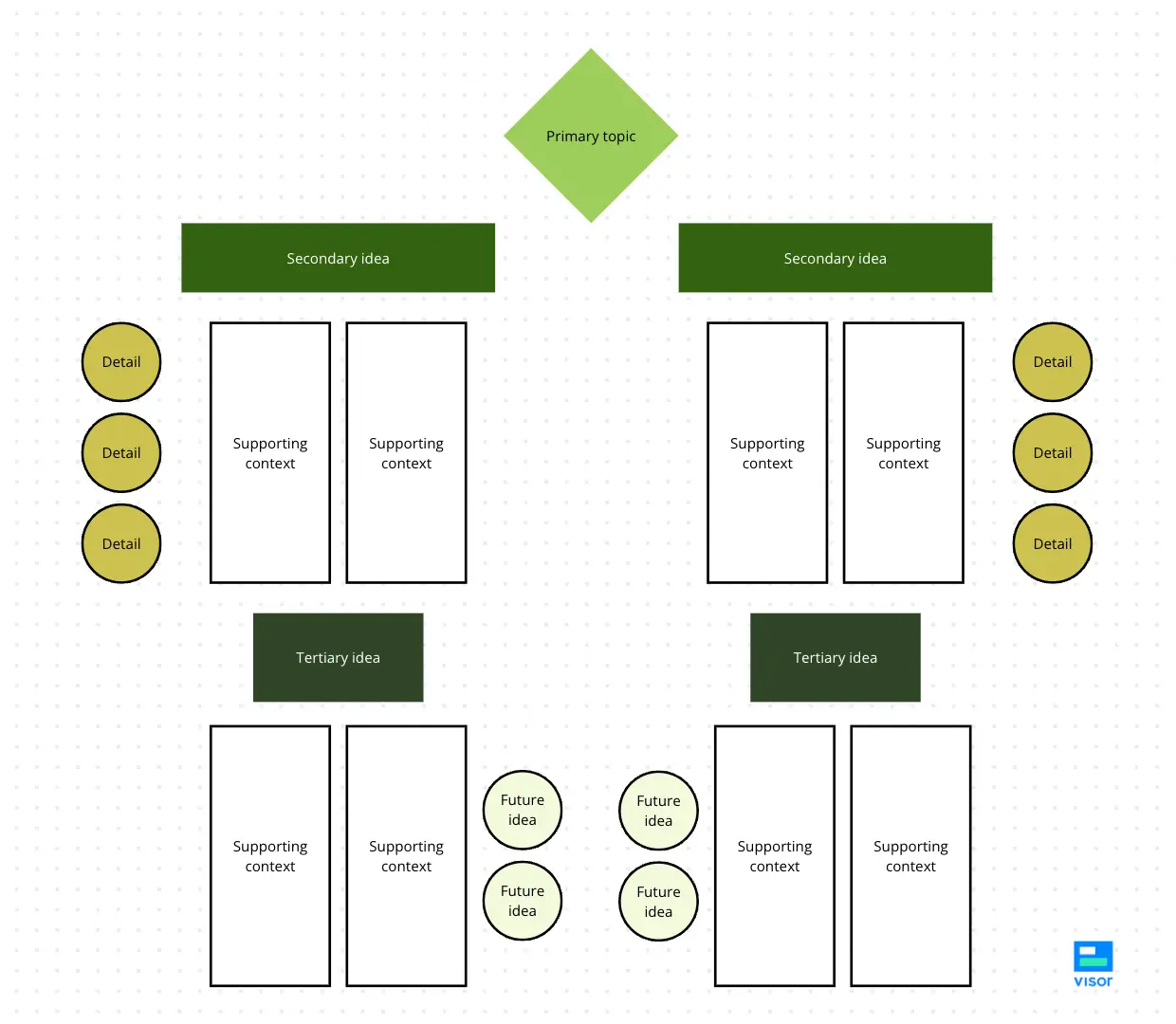
Sometimes you need far more space for detail than a traditional word or mind map allows for, and this is a great arrangement for those scenarios.
Linear and straightforward

When you can’t overthink the issue, when everything flows from a single source, choose this template.
What words does word mapping make you think of, PM?
Excited? Useful? Relieved? All good choices, and we hope you feel like you have this next project that much more in the bag.
Word mapping isn’t the most common tool in the project manager arsenal, but you’ll be glad you have it when you need it. And these templates will help you make it look clean, polished, and sensible when you do.
If you’re looking for more ways to create beautiful, compelling visuals, Visor can help. Visor is a project portfolio management tool that helps you turn your Jira data and more into professional, accurate charts and reports to share with every stakeholder. Visor has a ton of free templates, ranging from a simple Gantt chart template to agile templates like sprint retrospectives and many, many more!





